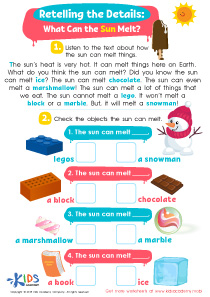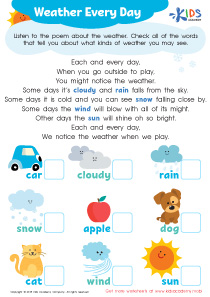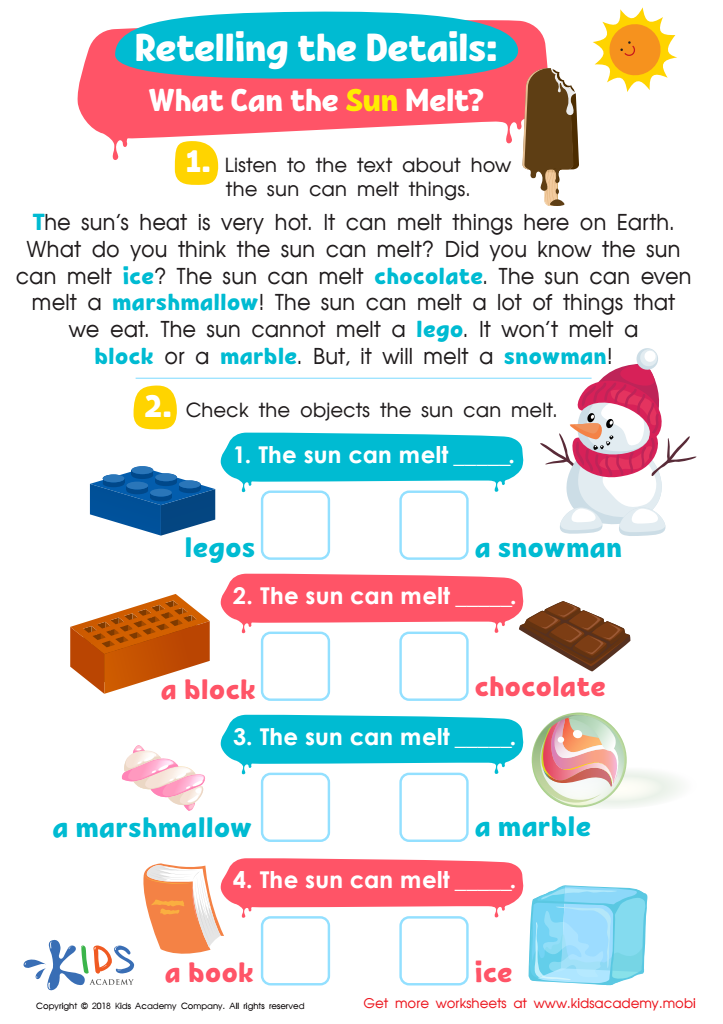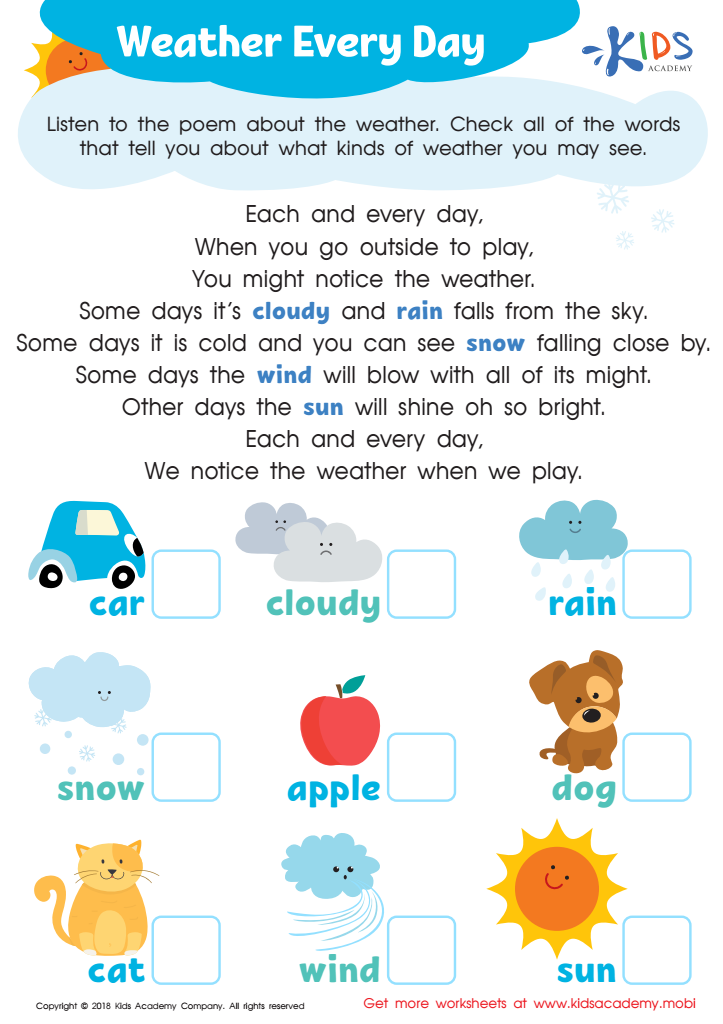Retell Details in a Text - Lesson for Preschool, Chapter - Answering Questions About Informational Texts Read Aloud (Content)
In this engaging lesson, "Retell Details in a Text," preschool students will embark on a learning adventure that focuses on enhancing their comprehension and verbal expression skills. As part of the broader unit on Reading Informational Texts, this lesson zeroes in on teaching students how to listen attentively to informational texts read aloud, specifically focusing on the content related to everyday concepts such as neighborhoods and weather.
The activities included, like "What Is a Neighbor? " and worksheets such as "Retelling the Details: What Can the Sun Melt? " and "Weather Every Day," are designed to cultivate students' abilities to recall and articulate specific details from the texts. Through these exercises, children will learn to identify key elements such as characters, settings, and main events, and how they can retell these details in their own words.
Understanding how to retell details from a text is essential for young learners as it lays the foundation for critical thinking, enhances their memory skills, and improves their capacity to follow narratives. This skill is not only pivotal in their academic journey but also enriches their everyday communication and understanding of the world around them.



-
Activity 1 / What Is a Neighbor?
-
Activity 2 / Retelling the Details: What Can the Sun Melt? Worksheet
The sun is that yellow ball blazing hot in the sky. When the sun is at its full peak, sometimes it shines so hot that everywhere gets hot and we sweat buckets. Also, the sun can melt things here on the planet. Ask your kids if they can tell you some of the things that the sun can melt. Read this short informative text on how the sun can melt things, and highlight the objects that the sun can melt. Now, read the questions out loud to your little ones, and help them check the correct answers.
-
Activity 3 / Weather Every Day Worksheet
What is the weather like right now? Can your child look through the window and tell you? Is it rainy, stormy, cloudy, snowing or sunny? And which weather does your little one enjoy the most? Read this short poem about the weather to your child. Make sure they take note of all the types of weather the writer talks about. Then, help them check all the words at the bottom of the worksheet that tells us what kinds of weather we may see every day.







